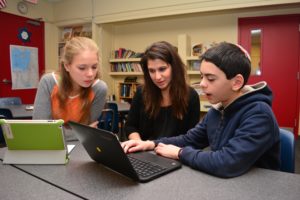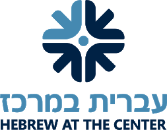Picture This: Envisioning Our Middle School
March 3, 2016 by
 What an exciting moment this is to be on the cusp, at that moment of possibility and potential. As we look ahead to our Middle School, we can embrace the opportunity to apply what we have learned, to enrich what we have achieved, and to realize what we imagine. This is the time to come together to refine our joint vision as we start planning for a Middle School that extends the values and objectives of our Elementary School – a Middle School that introduces innovative ideas and strategies to model high scholarship within a culture that recognizes, celebrates, and cultivates the energies and possibilities of Middle School students.
What an exciting moment this is to be on the cusp, at that moment of possibility and potential. As we look ahead to our Middle School, we can embrace the opportunity to apply what we have learned, to enrich what we have achieved, and to realize what we imagine. This is the time to come together to refine our joint vision as we start planning for a Middle School that extends the values and objectives of our Elementary School – a Middle School that introduces innovative ideas and strategies to model high scholarship within a culture that recognizes, celebrates, and cultivates the energies and possibilities of Middle School students.
To create a dynamic learning community committed to growth and excellence, we must inspire and foster our students’ investment in their learning; we must all engage in learning that has a purpose and a relevance. Our learning will be spurred by issues and efforts that matter and that can positively contribute to our world. All too often, students study subjects at school without a clear sense of their connection to their own lives, hearing promises that they will be able to apply what they are learning at some far off point in their futures. But think about what drives us to learn more in our personal or professional lives: it is the need to learn in order to do what we need to do and to accomplish what we want to achieve. Embracing the truth that our children are capable of shaping our own community and of participating meaningfully in their broader communities, we will empower them through opportunity and support. Our students will delve into subjects to apply their understanding in authentic contexts. Middle Schoolers are at an age with significant gains in content knowledge, skills, and abstract reasoning, and they thrive in contexts where their ideas and values are honored and acted upon. Our Middle School can offer multidisciplinary forums for focused development of skills in the service of meaningful enterprises.
As we imagine possibilities for our Middle School, it is important to clearly articulate and share our vision. We can express goals like “authentic and purposeful learning,” “collaborative learning communities,” and “personal and academic excellence,” but without a picture to illustrate these objectives in action, it is difficult to solidify our meaning and clarify the possible. Passion without substance leaves us wanting. So over the coming weeks and months I will share pictures of what can be in our Middle School. I hope these efforts to paint possibilities with words inspires you to share your own ideas and to envision what could become realities for our children in our Middle School. For example, consider how our children could engage with the visual and performing arts in ways that will speak to the emotions of their audiences as they also deepen their understanding of themselves and others; as one of my students recently explained, “Art is the effort to create in order to inspire emotion.” Reflect on your own experiences learning about your world through the study of foreign languages, cultures, and lands, and then let’s contemplate how we can offer opportunities for our students to connect those studies to authentic interactions and experiences. There are many pictures we can begin to develop together. I will begin here by inviting you to…
- Imagine a Middle School humanities class that addresses history and language arts through a forum in which students work as real life historians and authors, writing historical fiction short stories, sharing their works with peer editors and then submitting their completed copies to teams of “publishers” in our class. Peer publishers would learn aspects of the publishing business as they select one or more of the books and begin to employ marketing strategies. Their stories will reach broader audiences through a school literary magazine and by submitting their writing to actual journals that publish new authors. We will also explore the business model of self-published works and how authors use responsible advertising and social media communications to gain publicity for their books.
- Imagine students studying Chumash, Mishnah, and Gemara, developing their own questions and commentaries as a way to engage with the values and analytical reasoning that the study of these sources demonstrates and inspires, in a dynamic Beit Midrash with access to our sacred texts and in a forum that encourages chavrutah learning and debate. Our students will grapple with contemporary controversies and debates, using the sources to support their comprehensive understanding of the dilemmas and to construct their own well-substantiated and articulated responsa.
- Imagine our Middle School students picking up the call to action initiated by our First Graders who, in their efforts to create a guide book of Rock Creek Park geared to children, noted the pollution that marred some areas of the park. Our Middle School students can study the causes and effects of pollution on the park’s ecology and various species of flora and fauna. Their study of the environment and biology will interplay with their efforts to make a meaningful impact on a resource close to us geographically and personally as they research initiatives to engage with the public and our local government to support our park’s health and future. As the Sixth Graders did this year, we can conduct water experiments that study the pH and composition of the water to extend their understanding of chemistry and provide data to support our understanding of the impact of pollution on the water. With well-researched and substantiated studies and proposals, our students could participate in one of Mayor Bowser’s administration’s Budget Engagement Forums and potentially influence positive action. We will not only prepare our young people for future involvement, we will empower our young citizens to have an impact now.
- Imagine a Middle School library which boasts the works of its own students, including collections of academically incisive articles that examine topics such as the relevance of literature and history to contemporary circumstances as well as multidisciplinary studies of aspects of Jewish religious practice and philosophy. Writing for a broad audience, our students will support each other as peer editors and collaborators to create analytical writing that reaches the standard of excellence we will clearly define and relentlessly pursue.
We are fortunate that the learning at our school provides a strong foundation upon which we will build as we extend the integrated and authentic learning in our Elementary School to meet the unique capabilities, interests, and experiences of Middle School children. We have students guiding their own learning and being encouraged to dig deeper by their teachers and peers throughout the school. Kindergarteners created a community library to suit their needs better. First Graders wrote and illustrated a guide book of Rock Creek Park geared to young children. Second Graders studied the solar system and created spaces stations through their scientific understanding. Third Graders wrote and used mixed media to illustrate their handmade Hebrew books that they shared with their second grade reading buddies. Fourth Graders examined biblical figures to understand their motivations and contexts as they also identified the universal threads that connect us all. Fifth Graders considered problems that they can address through their original inventions and Sixth Graders explored and created books about ancient civilizations and literature, honing research and writing skills, as well as applying a variety of modalities to represent their learning. Throughout, our students ponder universal questions about faith and our relationship with our Jewish past and future. Our Middle Schoolers will honor and commit to furthering the tradition of rich scholarship, debate, questioning, and innovative thought that has characterized the Jewish approach to learning and wonder. The spirit and energy of meaningful and purposeful enterprise thrives in an environment where students are at the helm of their learning.
As we continue to envision and plan for the Middle School, it is important to help ourselves and others see our vision by creating pictures of what could be. Let’s talk in specifics as we imagine and contemplate the possible. What will the children walking in our halls encounter and talk about? How could the structure of our days and the nature of our pedagogy encourage integrated and engaging learning? What do you envision taking place in our classrooms that will nurture curious inquiry and thoughtful analysis within a community that nurtures our students’ academic, emotional, and spiritual growth? As we capitalize on our students’ increasing autonomy and responsibility, as well as their growing awareness of issues of justice and fairness and their own role in tikkun olam, what activities could our children engage with in our school and in the broader Washington, DC community? As we connect our values to our vision – and soon our reality – for our Middle School, let us share our ideas for what can be. Let us picture it. And then let us begin to build it together.






